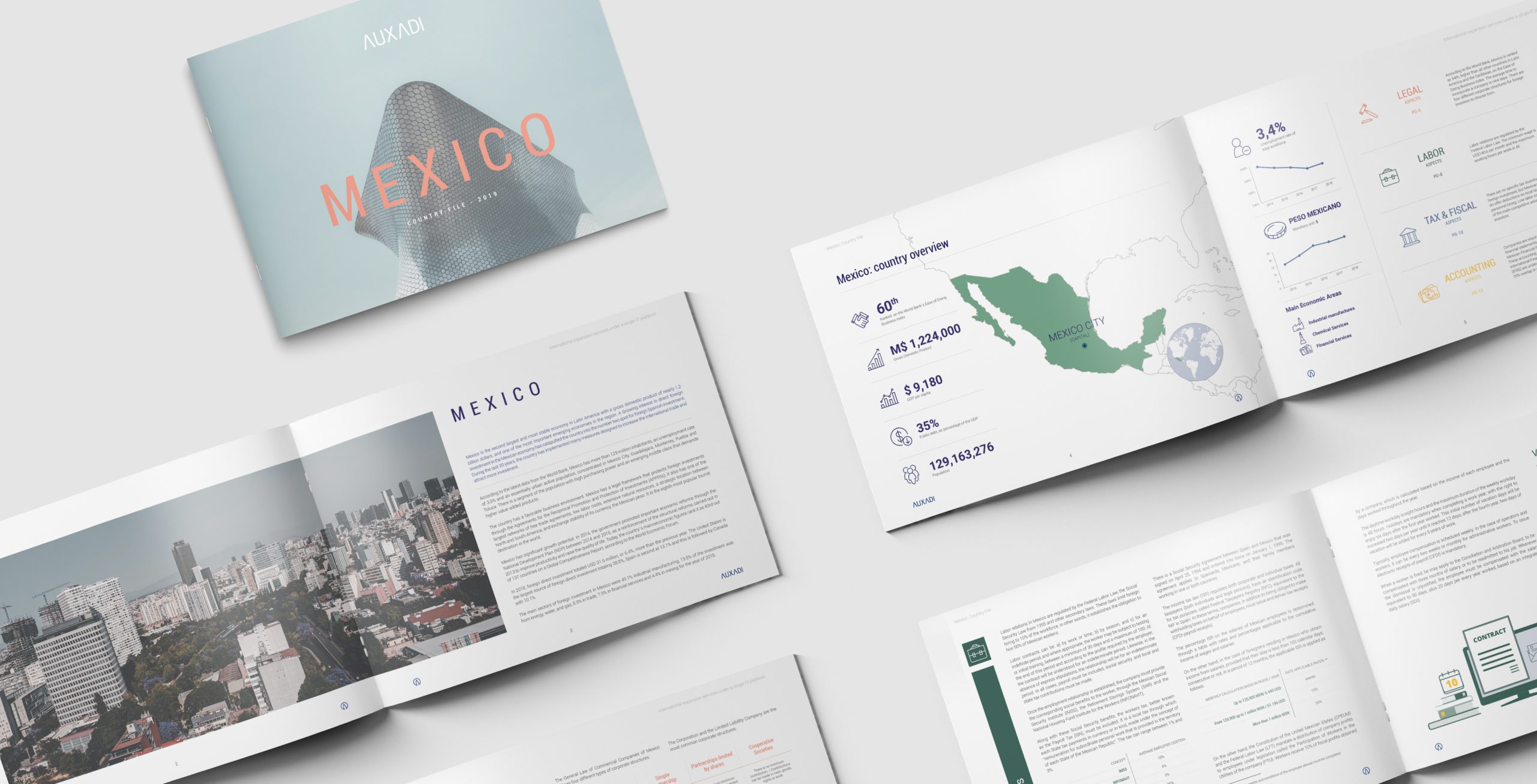A Guide to International Expansion
People and talent
Hiring the right people
One of the essentials for any burgeoning international business is having the right people in place. Not only the new people you’ll be recruiting to operate your foreign business, but experienced people who can train your new talent – who can be guides and mentors, who you can trust to reinforce your company culture with the new staff you’ll be hiring.
Our International Expansion survey showed 41% noted global mobility, visas and work permits to be of the greatest concern for international expansion, while 30% of respondents believe finding the right talent to be a barrier to internationalisation.
In this section, we’ll look at some of the considerations for both moving foreign workers to your new location and hiring the right local staff.
Foreign workers
Having the right people in place at the right time involves a lot more than just deciding who should go. You should also be sure that the people you choose can go, based on their personal circumstances as well as the rules for foreign workers in your new location. Moreover, you should start investigations early. Visa processing can take time, and you want your seconded staff to have time to find accommodation and properly settle before jumping into the new business.
Choose carefully. You don’t want to risk wasting your investment and damaging your brand. Further, seconded staff may be in place for a fair amount of time and will have to deal with not only the challenges involved in moving to a foreign land (even temporarily), but also with an untried bureaucracy, enthusiastic but nervous new staff, and the additional difficulties posed by language and cultural differences.
There are considerations for secondment that could be even more important than who you send. For example, maintaining a good corporate culture and managing your local reputation while taking local working practises and bureaucracy into account can definitely be challenging.
“Maintaining a good corporate culture and managing your local reputation while taking local working practises and bureaucracy into account can definitely be challenging”
First, and possibly most important, is planning. What are the visa requirements? Are you sending someone to lead your recruiting from in-country? How do you intend to manage the secondment? How many seconded staff will be required to provide adequate training and oversight to your local team? Are secondees going to rotate or swap after a certain period? Will they be there for a fixed period or ‘drop in’ for a few days per week? And, how will they be paid? Do local regulations require them to be paid in-country, or can they continue to be paid by Head Office? What about local tax and social security requirements? How will they manage in a medical emergency?
Do your research and consult with local agents to check requirements. Local regulations may force changes to your secondment plan (like experience level, duration of stay, payroll options, etc).
Next, consider funding for your seconded staff. What will the company pay for, and what will your people have to manage on their own? Will you provide additional benefits during secondment? Maybe a trip home every six months, or private medical insurance, or accommodation on location? Maybe a bursary? Will secondees get any additional remuneration, benefits, or promotion from their secondment?

Only when all this planning is completed can you look at building a shortlist of possible secondees based all these requirements. Obviously, though, the person/people you’ll be sending to nurture your fledgeling operation must have experience and knowledge of your business, but they also must be capable leaders. There’s nothing more devastating to a new business than having someone with no leadership or management skills in charge. Consider carefully.
Now it’s time to talk to your candidates. Time to give them your secondment pitch, sound them out, and make sure they want to go – that it’s a challenge they can accept. There will be many things affecting their decision; family, medical issues, personal history, and even just the considerations of their current housing (Can they sublet? Do they have to put things in storage for an extended stay? Will the firm pay for storage?). You’ll find your shortlist narrows further on its own.
Then, and only then, can you begin the visa application process – based on your prior review of the requirements and your selection of compatible secondees. The visa process itself may take some time – and you can best use that time to plan and strategise with them, so your new operation can launch as smoothly as possible.
“The visa process itself may take some time – and you can best use that time to plan and strategise with them, so your new operation can launch as smoothly as possible”
Your secondees should understand how the new location will work – what essential elements will be provided by Head Office (and subject to transfer pricing) and what third parties they’ll be dealing with on the ground (suppliers, trades, local representatives, local directors, etc.). Make sure your secondees understand local culture and business practices, working hours and conditions and what they can expect of their new local colleagues.
Get them involved, get them invested. Ask their opinions. Make sure your secondees are as prepared as they can be before you send them on their way.
Local recruitment
After all the challenges and pre-planning involved with seconding experienced people to your new location, local recruitment can be a relatively smooth process – simply by hiring a local HR/Talent Agent to manage local recruitment, reporting to your HR/Talent Director at Head Office.
Not only can local agents more easily source staff to interview, but they can also advise on local regulations, taxes, and registrations required for your new workforce. Local agents are also best placed to advise on any employment code changes, recommend suitable benefits and perks, and may even be able to help you choose the best location to place your operation based on the available local workforce.
The most important consideration when hiring a local workforce is ‘the fit’. Obviously, everyone who applies for the roles will be qualified or able to be trained but, as we know, suitability is based on more than previous experience. And, whether you interview by phone/video to Head Office, or candidates present themselves to your secondees on the ground, that all-important ‘fit’ is fairly easily recognised.
Find staff who’ll both accept and reinforce your company culture. Who want the challenge and (possible) prestige of working for a newly opened firm, who could be good brand ambassadors – both local and (with some experience) international, now and in the future.
Your secondees will see it as an adventure and huge opportunity.
Once your local talent has been sourced, it’s up to your secondees and your management team to fold them into the company and make them feel included and valued – that they’re a part of something bigger, something exciting, and even more opportunities may now be open to them.
All in all, on the people side, international expansion is more exciting than painful. Sure, visas and local regulations can be a headache, but your secondees will see it as an adventure and huge opportunity, and you’ll probably find your local staff enthusiastic and eager.
The best advice we can offer is for you to go into it with eyes open, and make sure your staff share your enthusiasm for the enterprise.
Legislation and labour codes
Failure to comply with labour laws can lead to action from regulators and action from employees, putting a significant dent in your company’s reputation and potentially irreversibly damaging your brand. And, when undergoing global expansion, this becomes even more critical.
There are basic internationally accepted rules (the ILS), regional codes (like EU labour laws) and country-specific labour codes (even municipal ones in some places) – and all of them touch on requirements for contracts, termination, vacation allowances and other worker rights.
If you’re moving into a new country, it’s essential to understand and comply with all of these.
International Labour Standards (ILS)
The International Labour Organisation (ILO) is a United Nations Agency that sets global labour standards across its 187 member countries. Since 1919, the ILO has developed and maintained a system of international labour standards aimed at promoting opportunities to obtain and undertake decent and productive work, in conditions of freedom, equity, security and dignity.
The most fundamental labour standards are contained in the ‘Declaration on Fundamental Principles and Rights at Work’ and revolve around four key policies:
- Workers’ right to free association and collective bargaining
- Prohibition on forced or compulsory labour
- Prohibition on child labour
- Prohibition on discrimination among workers, including equal renumeration
More than 150 countries have ratified the ILO standards.
The ILO also provides a database of international labour codes. NATLEX provides detail on the labour codes of 196 countries and territories.
Regional labour codes
Another form of international labour law is the set of rules applied across a select group of countries, the most prominent example being European labour law, applicable across the European Union.
Rights for employees under European labour law include:

The right to a written employment contract

The right of employees to free movement across EU member states

A right to a minimum of four weeks’ annual leave

Minimum health and safety standards

Discrimination prohibition

Restrictions on redundancies
However, EU labour legislation doesn’t cover everything and, since EU Member States can add their own country-specific rules to this umbrella legislation, there’s more variation on labour codes within the EU than you’d think. For example, Member States control the minimum wage within their borders and can also apply different rules for collective bargaining.
Another example of a regional code is the North American Agreement on Labor Cooperation (NAALC), a ‘side agreement’ to the North American Free Trade Agreement. Under NAALC, Canada, United States and Mexico all agree to enforce certain minimum labour standards, including (among others):
- Freedom of association and the right to organise
- The right to collective bargaining and the right to strike
- No child labour
- Equal pay for equal work
- Health and safety protections
- Workers’ compensation
- Protections for migrant workers

To understand more about the regulatory, legal and labour complexities of specific countries, click here to access our library of detailed Country Files, all produced to help you navigate new jurisdictions.
Country-specific codes
Finally, and this is where it can get even more complex, you must have a good understanding of the detailed labour codes of your chosen expansion country – which can vary wildly.
For example, workers in Colombia are guaranteed 15 days vacation but must actually take eight days, while the rest can be paid out. In Costa Rica, workers get two weeks leave for every 50 weeks worked, while workers in Ecuador are entitled to an uninterrupted period of 15 days of leave each year.
Specificities vary between countries, even for countries within the same regional code. For example, in Germany, an employer must consult the works council before dismissing any employee and there are specific requirements applicable for collective dismissals. In Luxembourg (Germany’s neighbour and workplace for many commuters from Germany), an employer may dismiss an employee with notice only for “real and serious” reasons linked to the employee’s conduct, or based on the company’s operational needs, or for a ”very serious” reason resulting from the employee’s misconduct or actions. While statutory notice periods apply in both countries, termination procedures are very different.
It’s incredibly important, therefore, to thoroughly investigate the labour codes enforced in your chosen expansion country – as there’s significant reputational risk involved in operating in a country where international standards (at the very least) aren’t complied with. There are huge variations in compliance and enforcement of employment legislation between countries, ILS ratified or not.
But the challenges of labour laws shouldn’t deter you from expanding across borders. Engaging a local provider who can offer advice and knowledge of local requirements will help unravel any complexities and relive your headaches. They’ll also be on hand to ensure you’re adhering to the strict rules and guidelines, helping make sure your international business runs smoothly.
Payroll
Payroll is one of the most sensitive areas in any organisation. When dealing with payroll management at an international level, the function carries a much greater level of complexity.
If your business has several international locations, you must adhere to each location’s: tax codes; regulations; variations on employment law, benefits and bonuses; social security; registrations and other considerations – all of which will affect the payroll function in each location.
Before starting to implement an international payroll process, it’s important to take the following aspects into account. They can become issues or even pose a threat to the entire payroll flow and, therefore, the activity of the organisation – and may even affect the success of your international expansion.

Cultural component
The cultural aspect is a basic consideration for international expansion.
Beyond the legislative specifics of your chosen country (like rules regarding the number of payments, payment intervals, social security deductions, and so on), the person in charge of leading the international payroll process may have to deal with de-localised teams, and possibly a third party in each country – each with their own cultural characteristics, different ways of working, and different systems.
Understanding the specific cultural component of each country is essential.

Control and visibility of information
Closely linked to technology, it’s essential that whoever leads your multi-country payroll process has full control and visibility of all relevant information. This includes full visibility of employee contracts, sign-offs and approvals, of payments and bank transfers, of tax and social security deductions.
Although this may seem a no-brainer, it can sometimes be missed, and it’s already too late when problems arise from a lack of control.
Defining your management model and providing the tools that give you full transparency of data and accurate reporting is something that you must keep in mind before beginning your very first process of crossing borders.
Plan ahead and future-proof your business.

Technology
Technology plays an indispensable role in international payroll.
Having a technological solution to ensure local compliance avoids unpleasant surprises, now and in the future (for example, including automation from the start, when international payroll is smaller, will greatly ease future growth).
Not to mention, given the sensitivity of payroll data, your solution must include security – reassuring both your staff and regulators. And there are data privacy regulations to consider.
Having technological solutions adapted and customised to accommodate the real needs of those who manage your payroll eases pain points and assures a smooth process.
Complexity of the process
The payroll management process on an international level starts complex, and will only get more complex as you grow further and expand into more countries. All measures must be taken to make life easier for those who manage and lead the global payroll function.
Some of the complexities you should focus on are:

Your choice of model
Are you leaning towards centralised or decentralised payroll management? Consider the difficulty involved with one central Human Resources (HR) or finance team learning all the variables of multiple countries, which they’ll need to be able to accurately monitor and maintain your compliance. But the additional costs for systems, people and space adds up quickly.

Communication channels
Email is normal, but doesn’t provide the most secure, efficient and compliant means of communication. There are other options.

The approval process
Are you going for local level or global level payroll approval? Both? You should also consider digital approvals and automating the process.

The use of language
Think about whether the payroll-related terms you currently use are country-specific, and could cause problems. Does your new location use the same language or the same terms? How will that be managed going forward?

New staff onboarding
There may be multiple internal and external registrations required, in multiple countries.

Reporting format
What currency do you need your reporting to be in? Do you need consolidated or local reporting? Are your teams trained to match terms and payments? Different locations using different systems can make consolidation a nightmare.

Future-proofing
It’s vital to ensure your solution is fit for your expansion plans and adaptable for future growth. What will you need next year? In five years?
Outsourcing
A solution to all these issues is to have an outsourced partner to accompany you through your internationalisation – one who can also provide local knowledge and visibility, and can grow into other countries with you.
Using a third-party provider means no significant outlay in additional systems or people to run it, and no downtime for training your internal teams on the specificities of a new location. Your outsourced team will have the expertise you need to keep you compliant.
It’s crucial, though, to have a supplier that can manage onboarding and make it a fluid experience (guaranteeing the continuity of payroll payments and activity), one that that has the flexibility to adopt the processes of your company and, at the same time, adds value for your teams and your whole business.
Expanding across borders involves many moving parts that are easily overlooked and can have serious repercussions for future growth.
Not properly considering your international payroll operations will not only affect your business, reputation and employees, but also your HR/talent department and your internal finance function.
Outsourcing your international payroll to a trusted partner can provide exactly what you need with no massive cost outlay, and no downtime for staff training. The right outsourced team is where you need them to be, now and in the future, and has the technology and local expertise you need to ensure your global expansion runs smoothly, while giving you full real-time control and visibility of your data.
The challenges of scaling payroll internationally
Payroll is inherently local: local regulation, local pay elements, local employer obligations, local custom and practice, local filing requirements, local terminology and language, local software, local payslip formats – the list goes on and on.
But in today’s connected global economy, businesses operate increasingly across borders, spinning up teams quickly in different countries as they grow to meet customer needs or access talent. This means that even small businesses can have employees in multiple countries, which in turn means they need to figure out a way to effectively manage payroll in a variety of, often unfamiliar, locations around the world.
This presents certain challenges, because international payroll is inherently more complex than payroll in a single country.
Each jurisdiction an organisation is operating in will have different compliance obligations, regulatory frameworks, tax schemes, benefits, social security arrangements and contract models.
Furthermore, banking standards vary from country to country, meaning that the process of paying employees must be country-specific to ensure deadlines are met while accommodating for different bank transfer processing times.
“The process of paying employees must be country-specific to ensure deadlines are met while accommodating for different bank transfer processing times”
“This means that even small businesses can have employees in multiple countries, which in turn means they need to figure out a way to effectively manage payroll in a variety of, often unfamiliar, locations around the world.”
Whereas payroll in a single country is homogeneous, international payroll processing requires different inputs and produces different data outputs in each country.
Wrangling this data, providing local payroll providers with the right inputs, validating their calculations and reporting on all payroll activities to Finance and HR becomes ever more challenging as organisations grow in headcount and complexity.
According to many global payroll managers, the single task their teams spend the most time on is manually cleaning, cutting and organising data so all of their international payrolls are in the same ‘language’. This manual way of consolidating payroll data isn’t scalable and is vulnerable to human error.
Beyond a certain point, the traditional approach based on spreadsheets and email starts to break down. Dedicated tools for payroll management are necessary to introduce standardisation and to make the payroll function more transparent and accountable to the rest of the organisation.
For companies that are expanding internationally, the key to solving these problems is to combine strong local market expertise from local payroll providers, with solutions that can streamline the entire payroll process.
With the appropriate technology, it’s now possible to standardise payroll management across the entire company. Instead of each country having its own workflow and producing different outputs, which then have to be consolidated by hand by the payroll team, global payroll management platforms allow companies to have a single workflow for all national payrolls.
People Analytics
Enabling the expansion process through people management
Any international expansion provides a multitude of challenges and difficulties, with a myriad of resources and solutions on offer to solve them. But, no solution is as decisive or as beneficial to the process as people. The human capital and talent of any organisation is essential to the success of expanding internationally. And, with people, new technologies and data analytics take on even greater relevance.
The term ‘People Analytics’ encompasses all those technological and data analysis solutions to identify high-impact options for your business, using information on the people within your organisation and producing useable data in a solid, precise, timely, well-structured and well-managed manner.

All in all, the development and incorporation of People Analytics can be invaluable to both the internationalisation process and to planning future growth. After all, your people are your best resource.
Copyright 2022 Auxadi Contables & Consultores, S.A. | All rights reserved
Legal notice | Privacy and Data Protection Policy | Cookies Policy




